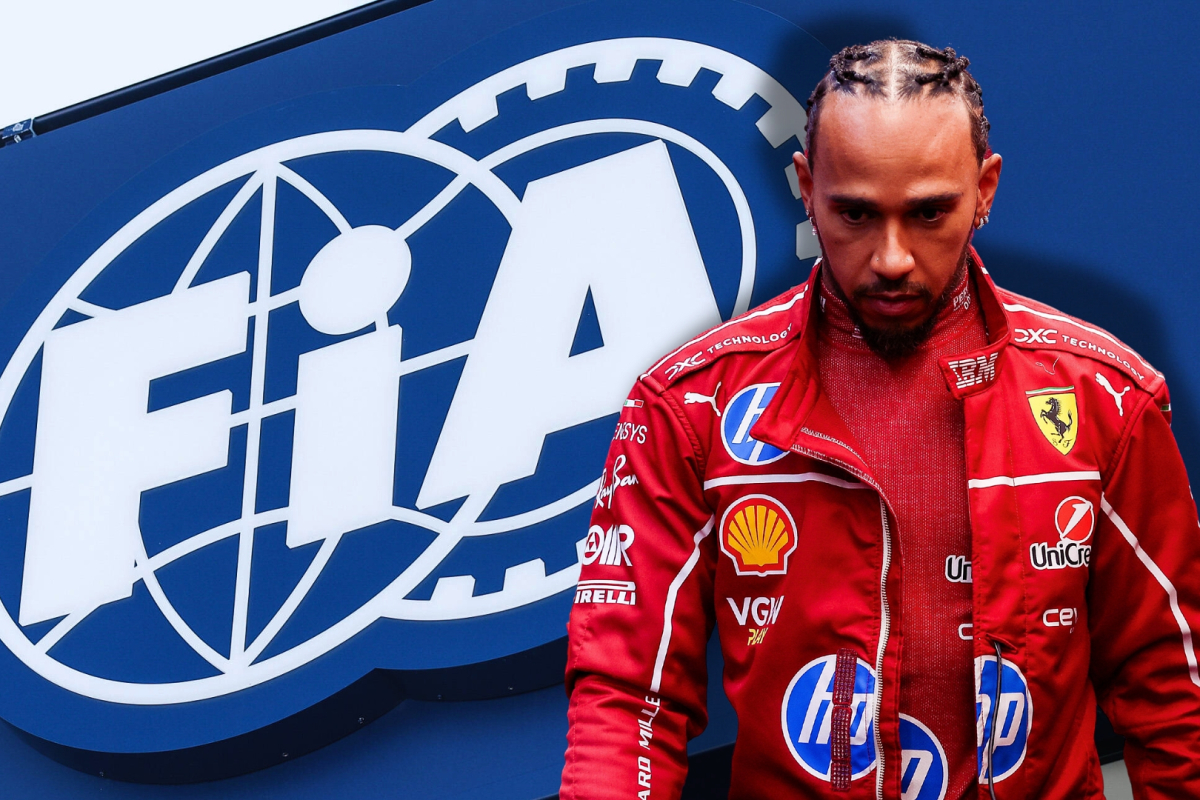Lewis Hamilton’s 10-second time penalty at the Mexican Grand Prix has sparked outrage from some of his fans on social media, posing the question: were the FIA correct in giving the F1 champion a penalty?
The Brit received the penalty for ‘leaving the track and gaining a lasting advantage’ after he went wheel-to-wheel with Max Verstappen through Turns 1 and 2.
Verstappen then cut the corner at Turn 3 for third place and when Hamilton tried to reclaim the position, he locked up at Turn 4 and cut the corner, emerging ahead of the Dutchman.
What has left people confused however, is that Verstappen not only cut the corner at Turn 3, but also at the first corner on lap one, and yet received no penalty from the stewards.
While this left some fans aggrieved, with Hamilton himself labelling the stewards’ decision a ‘double-standard’, the time has come to assess whether the FIA were in the right or the wrong.
To this aim, we will look into why Hamilton received the penalty in the first place, and why the likes of Verstappen and Charles Leclerc were not awarded a penalty for similar infringements.
Why was Hamilton awarded a penalty but not Verstappen?
According to the FIA’s official decision document on the Hamilton penalty, by leaving the track at Turn 4 and cutting the corner, the champion gained a lasting advantage to Verstappen and also failed to give back the position to the Dutchman.
The standard penalty for leaving the track and gaining a lasting advantage in a race is a 10-second time penalty, according to the FIA’s penalty guidelines, or a five-second time penalty if there are mitigating circumstances.
In this context, the guidelines state ‘a sporting advantage towards another competitor was gained, either in time or position or maintenance of a position.’ Hamilton did indeed gain extra time by cutting the corner at Turn 4, therefore the error qualifies as a sporting advantage.
Okay, so we’ve established why Hamilton received a penalty, but the main objection remains as to why Max Verstappen wasn’t punished.
The Red Bull driver was involved in two incidents comparable to Hamilton’s at Turn 4, with Verstappen cutting the first corner on lap one, and again at Turn 3 on lap six.
On lap one, both Verstappen and Charles Leclerc cut the corner and emerged ahead of Hamilton. Leclerc went into the lead of the race, while Verstappen took third from Hamilton as they rejoined the track at Turn 3.
However, Leclerc gave the lead back to Norris after leaving the track and gaining first position, while Verstappen also returned third place back to Hamilton by the time they exited Turn 5 on the opening lap.
When you then refer back to the FIA’s penalty guidelines, neither Leclerc or Verstappen obtained a sporting advantage. They did not gain time on Norris and Hamilton, nor did they maintain the positions gained by cutting the corner.
Where Hamilton differed on lap six, was that the champion gained significant time on the escape road and emerged a second ahead of Verstappen. Hamilton then didn’t give third place back to Verstappen, with Ollie Bearman overtaking the Dutchman for fourth.
The rules still state however, that even if another car has gotten between the two drivers, Hamilton should have still allowed Verstappen to repass him, even if it also meant getting overtaken by Bearman.
Furthermore, the stewards likely gave Leclerc and Verstappen more leeway on the opening lap, because the field was bunched together and incidents such as these are more commonplace.
Verstappen's second misdemeanour
But what about Verstappen at Turn 3 on lap six, I hear you cry!
So, Verstappen and Hamilton went wheel-to-wheel into Turn 1 at the start of lap six, thanks to a late lunge from the Red Bull. Prior to Turn 2, Hamilton was squeezed off track by Verstappen slightly, where the Dutchman got the nose of his Red Bull slightly ahead for third.
Crucially, when Verstappen and Hamilton approached Turn 3, the Dutchman had his front axle slightly ahead of that of the Ferrari’s at the apex, and therefore was entitled to room.
Verstappen being ahead at the apex also earned him third. Thus, when he went off the track at Turn 3, he was already in third position and did not have to give the place back to Hamilton. The champion also did not gain any time by leaving the track, therefore no penalty was imposed.
When you’re watching a race live and as a fan, you do not have the benefit of multiple replays of an incident, and it is easy to come to the conclusion that Hamilton was hard done by.
As ever however, the devil is in the detail and when you examine both of Verstappen’s incidents it is clear he was not in breach of Article 33.3 of the Sporting Regulations - which earns a driver a 10-second time penalty.
What is more important to acknowledge is why the Ferrari team did not instruct Hamilton to give the place back to Verstappen. Even if Hamilton had lost position to Bearman, it would have still been more advantageous for his race to sacrifice third for fifth, than to receive the 10-second time penalty while the field was still so close.
Of course, the stewards may not have taken kindly to Hamilton coming out so far ahead of Verstappen, and therefore still qualified for a 10-second time penalty, which seems to be the crux of the FIA's argument.
What is certain, is that it is impossible to review what happened in Mexico as anything but the consequences of hard but fair racing. The penalty seemed severe, but the rules are the rules.
This year the penalty guidelines were published by the FIA for public consumption, thus placing the stewards under further public scrutiny in a bid for greater accountability. If they had not abided by these guidelines, there would be equal calls of favouritism and abuse from the other side.
The stewards have a ridiculously difficult job, expected to review footage in an ongoing race with the pressure of making the right decision or else suffer intense public condemnation. We have to remember that stewards are humans in this context, and they cannot always make decisions that seem fair or correct.
At the Mexican GP however, the FIA made completely the right decision in penalising Hamilton but not Leclerc and Verstappen.
F1 HEADLINES: Aston Martin found in breach of FIA regulations as team DELAYS key 2026 decision
Related




































 Grand Prix of Australia 2025
Grand Prix of Australia 2025  Grand Prix of China 2025
Grand Prix of China 2025  Grand Prix of Japan 2025
Grand Prix of Japan 2025  Grand Prix of Bahrain 2025
Grand Prix of Bahrain 2025  Saudi Arabian Grand Prix 2025
Saudi Arabian Grand Prix 2025  Grand Prix De Monaco 2025
Grand Prix De Monaco 2025  Gran Premio de España 2025
Gran Premio de España 2025  Grand Prix du Canada 2025
Grand Prix du Canada 2025  Grand Prix of Austria 2025
Grand Prix of Austria 2025  Grand Prix of Belgium 2025
Grand Prix of Belgium 2025  Grand Prix of Hungary 2025
Grand Prix of Hungary 2025  Grand Prix of Azerbaijan 2025
Grand Prix of Azerbaijan 2025  Grand Prix of Singapore 2025
Grand Prix of Singapore 2025  Gran Premio de la Ciudad de Mexico 2025
Gran Premio de la Ciudad de Mexico 2025  Grande Prêmio de São Paulo 2025
Grande Prêmio de São Paulo 2025  Qatar Grand Prix 2025
Qatar Grand Prix 2025  Grand Prix of Abu Dhabi 2025
Grand Prix of Abu Dhabi 2025 